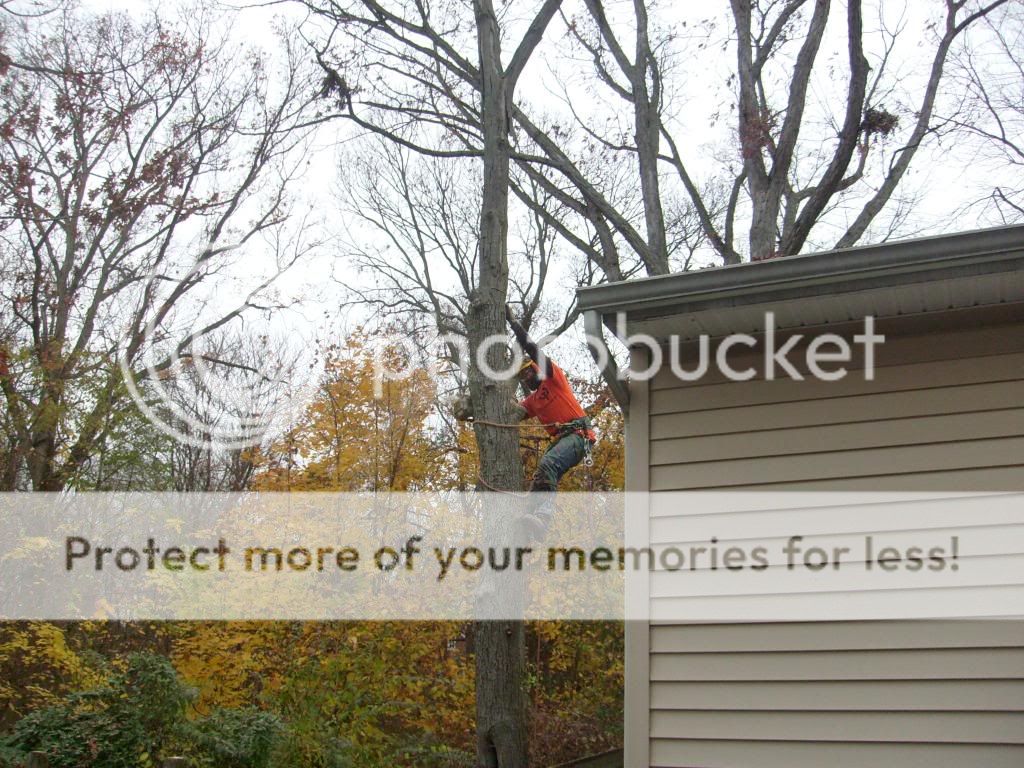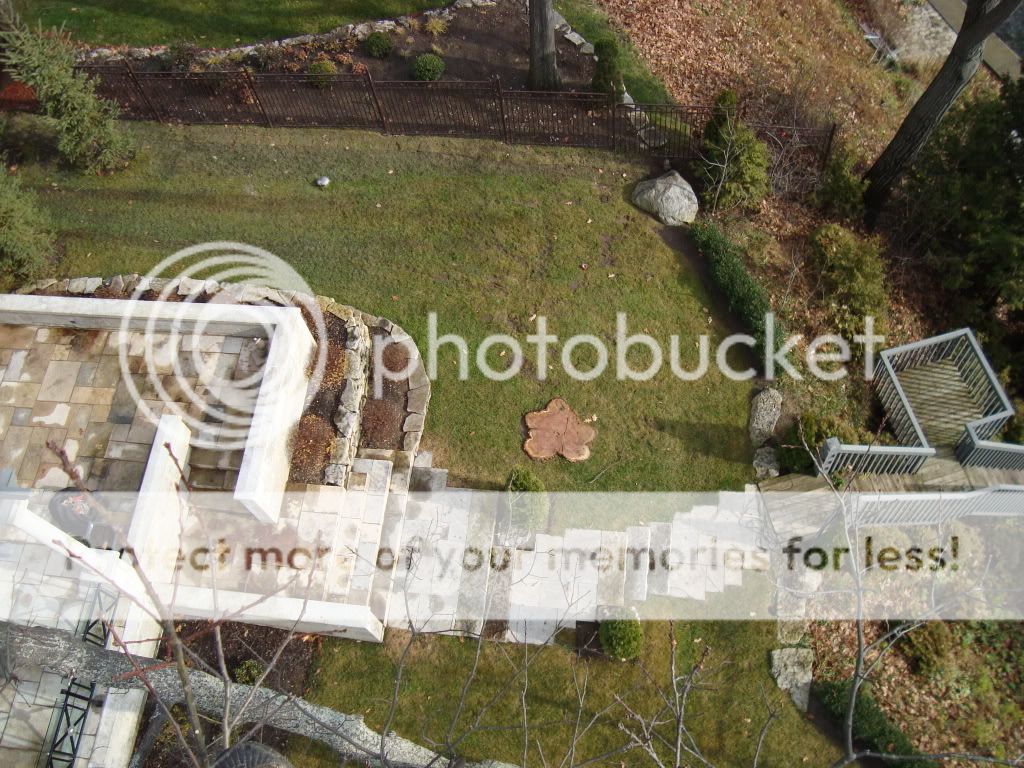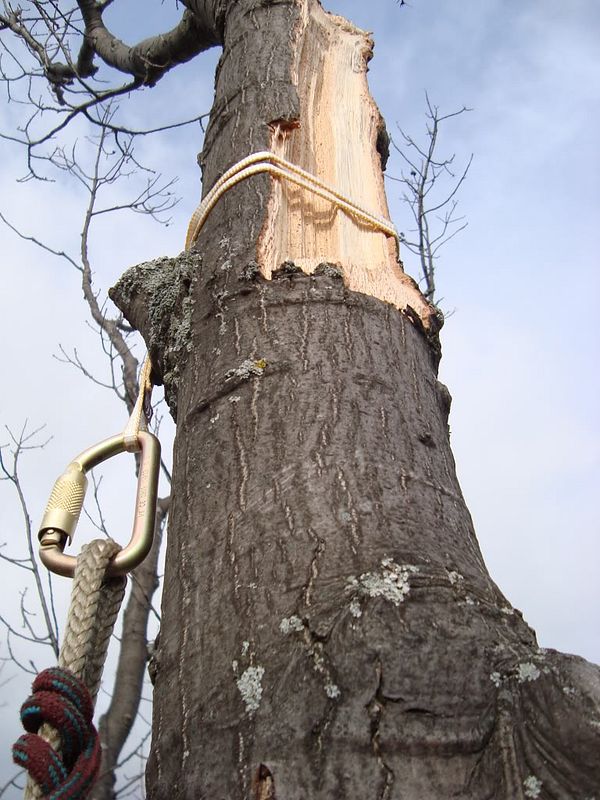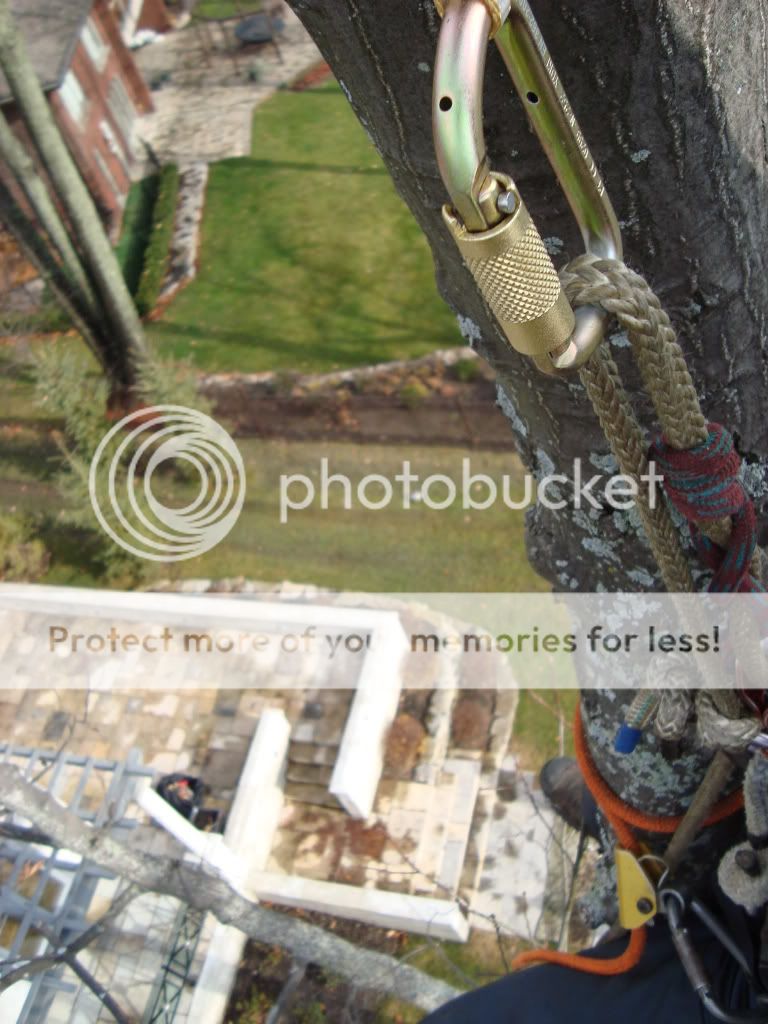Please take note that Blakes is only cutting a section that equals 1 1/2 firewood length there.

Ok. Well, not really.
Its a little bit of a bigger deal than what could have been done I have to argue but its probably my analosity that's talking.
Being really not well secured with either the lanyard and the top rope... a misgaff leaning hips back/ torso front and its into the thick of it. Surely an better body position would yeild a bigger cut. A safer cut.
I sometimes let my tope rope and lanyard intertwine on a spar, working them down and keeping both pretty tight when cutting. On backcuts I keep both hands on my ####, arms length, down by my navel making the cut. My cut is usually a about five inches from the support ropes, the top of the log I would be cutting is closer to me since I am up higher.
The " The Landflat" is something the should be strived for I think. Man, did you guys see what he was letting loose. I know I told him he could bomb the stuff but HELL he wrecked the yard under that little maple too. As ya'll can tell I guess Blakes was on a mission but with some more precise notches, better body positioning the yields would be greater as would the safty margins of course.
That was what kinda freaked me. I would say he was trying to be hotshot. I mean ask him about one handing the 26 through again and again, go ahead ask him! My advice to him would be to take more time setting up to make bigger, better cuts so that the time he reaches the bottom the ground crew would have it cleaned up.

Go ahead, take your time, you'll get more out each cut and keep them spar ropes tighter.







 Ok. Well, not really.
Ok. Well, not really.



















































 so the 361 was about the only option.) the flush cut at the ground was 56" dia. Spent 6hrs on the second day just getting the wood out of the damn thing, all came down on ropes: running bowline to half hitch, falsecrotched into a steel block down to the porta-wrap. By far the largest tree I've done since I got into this, really made me appreciate what I've seen some people do up to this point.
so the 361 was about the only option.) the flush cut at the ground was 56" dia. Spent 6hrs on the second day just getting the wood out of the damn thing, all came down on ropes: running bowline to half hitch, falsecrotched into a steel block down to the porta-wrap. By far the largest tree I've done since I got into this, really made me appreciate what I've seen some people do up to this point.

